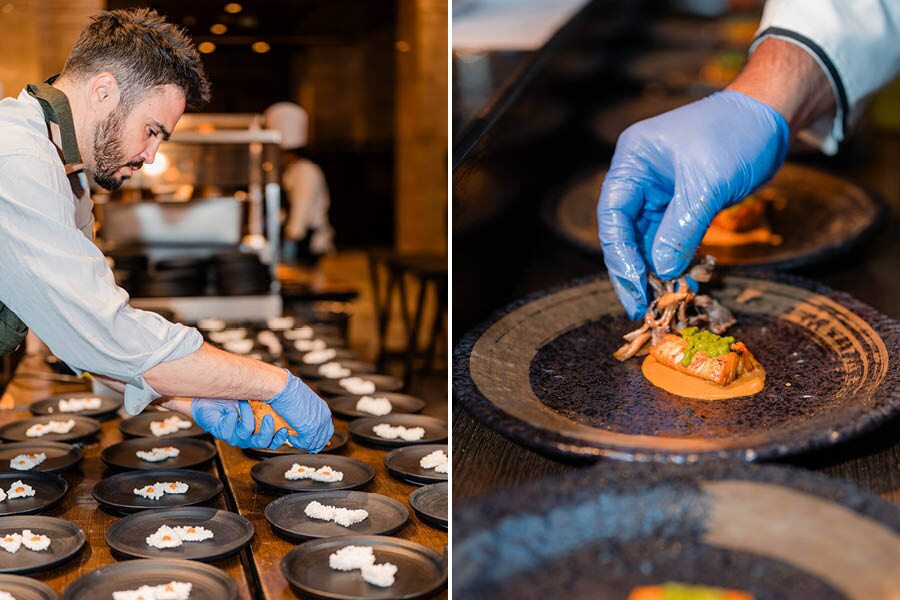It was a night to remember at the JW Marriott New Delhi Aerocity Hotel on October 25, as it celebrated its 11th anniversary with a memorable evening featuring a jaw-dropping show by illusionist Neel Madhav followed by a spectacular bit of dinner theatre curated by chef Caique Tizzi, of Brazilian extraction but based in Berlin and cooking just about anywhere in the world.
It was Sandeep Gupta, Executive Chairman of Aria Hotels & Consultancy Services, which owns the JW Marriott New Delhi Aerocity Hotel, who discovered chef Caique Tizzi. He first experienced a meal by chef Caique Tizzi at Art Basel Hong Kong. Simply blown away by the experience, he knew that he had to get the chef to India. What better occasion than the 11th anniversary celebrations of an iconic hotel that has cemented its position as a foodie hotspot in the capital with its lavish offerings, celebrity restaurants and top-tier culinary events. It’s here that I once encountered the British chef Marco Pierre White and managed to get him to make an omelette for me (but that’s a story for another day).

L-R: Sandeep Gupta with chef Caique Tizzi, and with illusionist Neel Madhav
A meal to remember
Chef Caique Tizzi left no stone unturned to make ours a meal to remember. Known for his innovative approach to tropical ingredients and immersive dining experiences across the globe, he had transformed the grand ballroom at the JW Marriott into a vibrant setting for Tropical Anthology — an experience designed to take us on a unique culinary journey.
Tropical Anthology is actually a series of dinner events by chef Caique Tizzi that explores the connections and history of ingredients and food across the tropics. Previous dinners have taken place in Berlin, Abu Dhabi and Miami. This dinner to mark JW Marriot’s 11th Anniversary was a completely new iteration focusing on the coconut, an ingredient more intriguing than I had previously imagined.
The six-course menu blended flavours, art, and storytelling, exploring the impact of tropical ingredients on diverse cultures around the world. Each course brought forward chef Caique’s signature style, combining elements of history and innovation. The evening’s atmosphere was heightened by the ethereal sounds of MIDIval Punditz, whose music created the perfect backdrop to the sensory celebration.

The setting for a unique dining experience at the JW Marriott New Delhi Aerocity
Chef Caique brought context to the meal at every course with his unique storytelling style, bolstered by deep research. Apparently, scientists have been unable to pinpoint the origins of the coconut tree, since coconuts fall into the ocean and are carried from shore to shore, all along the tropical latitudes, where they thrive.
Tropical Anthology: on the menu
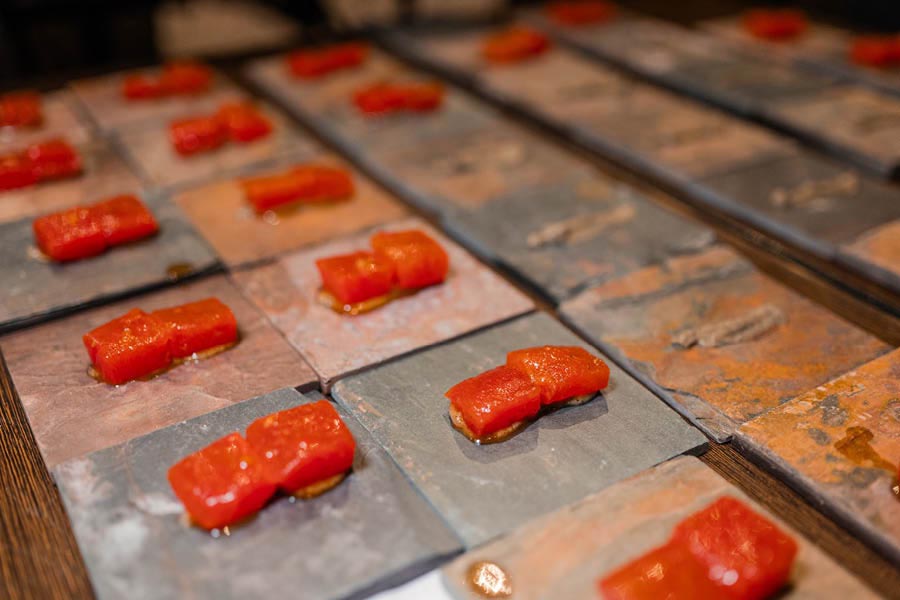
Cubes of watermelon seasoned with kimchi and smoked aubergine
The first course, Ceviche Clásico, kicked off the evening on a most promising note. Ceviche, of course, is a Peruvian dish, in which raw fish is marinated in citrus juices. However, as chef Caique informed us, it has links to the Philippines, and an indigenous dish called kinilaw, in which fish is preserved in acidic fruit juices— often coconut vinegar. Both countries were colonised by the Spanish, and it is speculated that kinilaw was brought by sailors to Peru and may have been the inspiration behind Peru’s national dish. Who would have thought, we wondered, as we gobbled it up.
There were little bites to tantalise our palates — cubes of watermelon seasoned with kimchi and smoked aubergine; a faultless green papaya salad; scallops done just right.
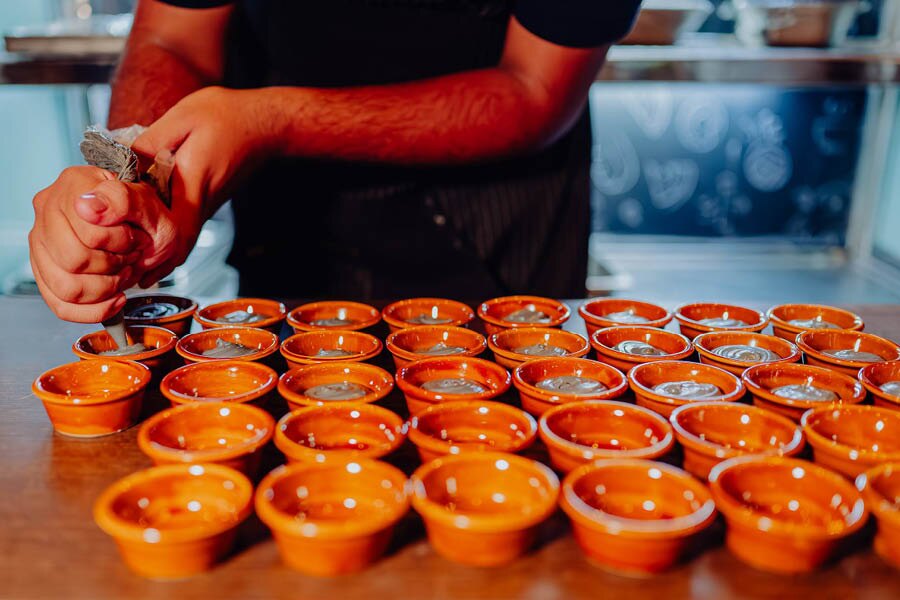
Grey sauce from the Galaxy of Flavour Adjusters
Chef Caique alluded to the food historian Doreen Fernandez who wrote that what unites the tropics is that the chef is not a dictator — diners are active participants, adding chillies, salsas, sauces, herbs, and salads to enhance the dishes. In a nod to that sentiment, adorning the table was a Galaxy of Flavour Adjusters — vanilla butter (shaped painstakingly like a snake, and a delicious new flavour bomb for me), chilli, green and grey sauces (the latter another startling new discovery), black lime salt and lime bread. The breadth of flavours, techniques and culinary drama certainly had the fecundity of the tropics.
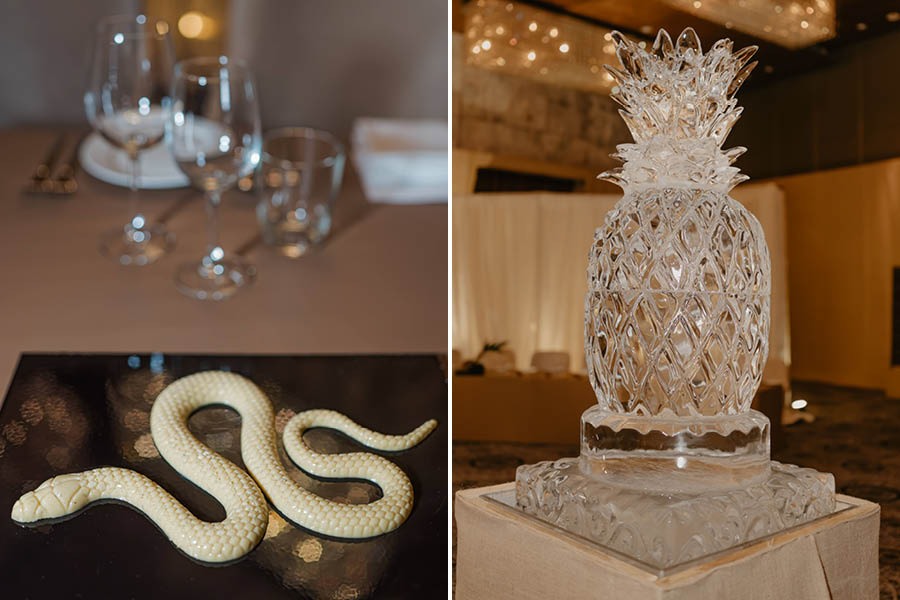
The vanilla butter snake from the Galaxy of Flavour Adjusters, and (right) the pinepple ice sculptures
At the centre of the ballroom sat two resplendent pineapples sculpted from ice, reminding us how in 16th-century Europe, when the pineapple was first brought to Europe from the New World, a single fruit cost the equivalent of what a luxury car would cost today. It became the ultimate symbol of luxury, and wealthy people would rent pineapples as decoration for parties but not dare to eat them. There was some skilled fruit carving, which dates from the 14th-century Sukhothai era in Thailand, on display too.
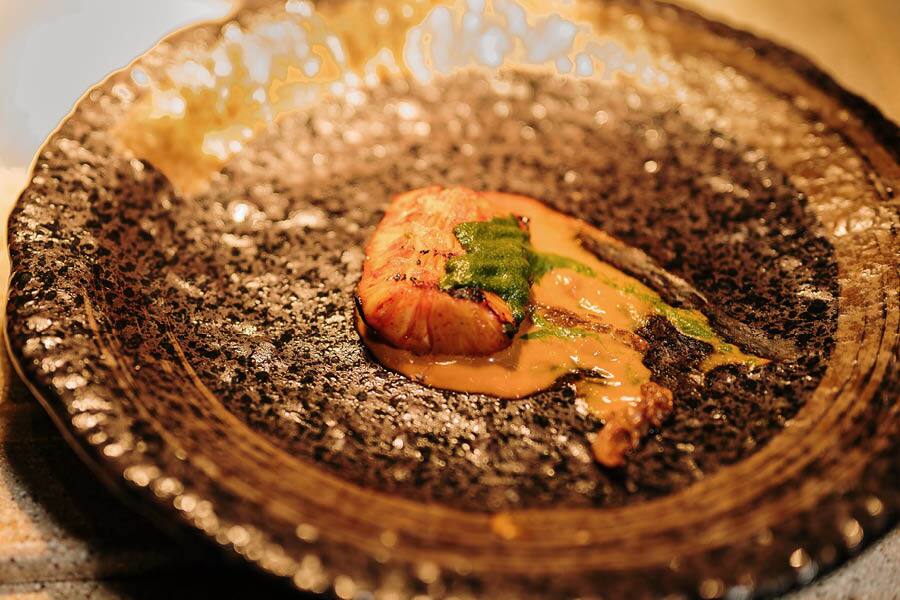
Adobo with tandoori chicken
The rest of the evening brought together a lot of culturally sensitive culinary fusion to the table. The main courses brought together dishes from Brazil, such as moqueca, a traditional fish stew. We were served a divine prawn version — and it was most reminiscent of a chingri malakari — which arrived in a green coconut shell covered with a veil of rice starch. There was adobo, an indigenous Filipino sauce originally made using coconut vinegar, which was paired seamlessly with a tandoori chicken, and mole negro, a traditional Mexican sauce made with cacao and nuts, which was served on medium-rare slices of lamb.
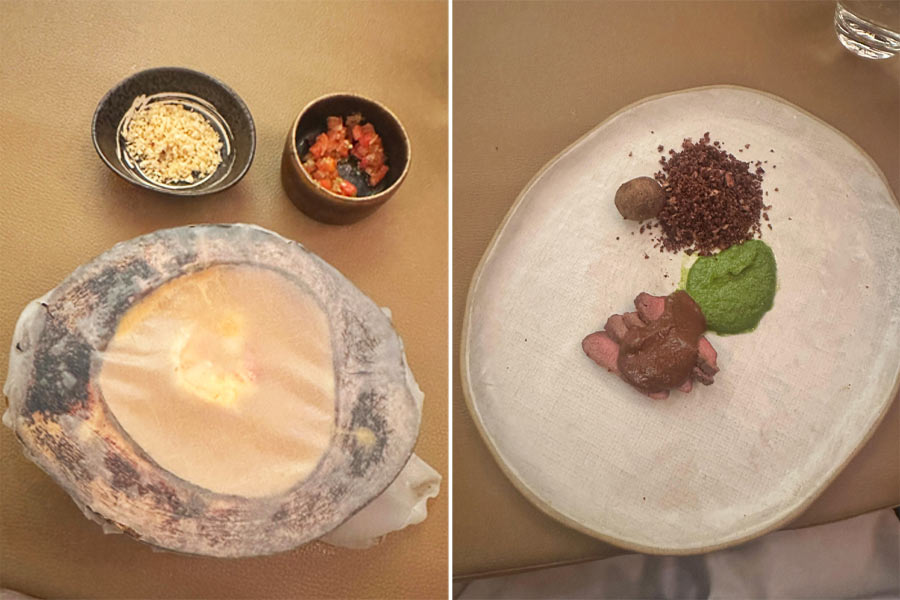
L-R: Moqueca served in a green coconut shell covered with a veil of rice starch, and lamb mole negro with Farofa Earth and baby potato Amit Dixit
Uniting these was Farofa Earth, a side dish made from the manioc root, native to Brazil where since ancient times tribal communities have used it to produce mashes, vinegars, flours and tapioca starch. Farofa is made from toasted manioc flour and is served at almost every Brazilian meal to add a ‘crunch’ to the staples of beans and rice. In this dish, guests dig for the potatoes themselves out of buckets of ‘earth’ made from farofa and cacao, celebrating these tubers and the earth they grow in. And indeed, the chef came and strewed the Farofa Earth and potatoes directly onto our tables, which had been covered with butter paper in anticipation.
A sweet end
The duo of desserts was a burst of flavour, a reminder of the effulgence of the tropics. In Dessert #One, the halva floss served as a perfect foil to the tart lime granita. Dessert #Two saw coconut gelato hold its own against Beijinho Miso, a take on beijinho — a Brazilian coconut candy made with condensed milk — ensconced in a subtle litchi leather.
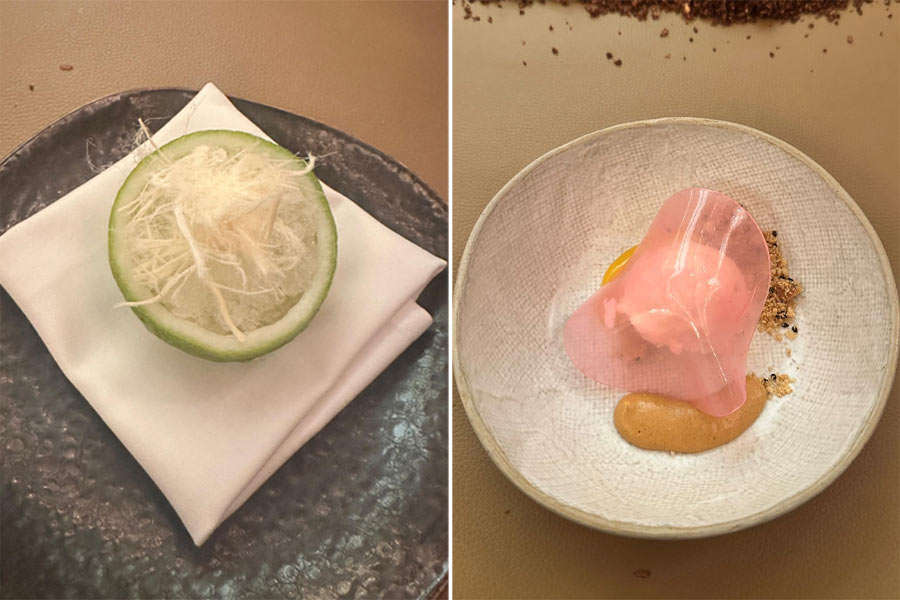
Halva floss and (right) Beijinho Miso Amit Dixit
Right before the end, we were reminded of the story of the Indonesian island of Krakatoa, which disappeared under water after a volcanic eruption in 1883. However, in December 1927, a new island Anak Krakatoa, or ‘child of Krakatoa’, emerged from the sea as a result of volcanic activity. Despite its isolation, lying between the islands of Java and Sumatra, signs of life were observed on the fledgling island. Coconut sprouts had washed up onto the shore and taken root in the volcanic ash. The coconut sprout, a symbol of resistance and renewal, had been the icon of the dinner. Now, it appeared as a woodcut drawing displayed on the Smoked Chocolate Wall. And that was Dessert #Three, since each of us was allowed to take a smoky tablet home with us, ending our tryst with the tropics.
